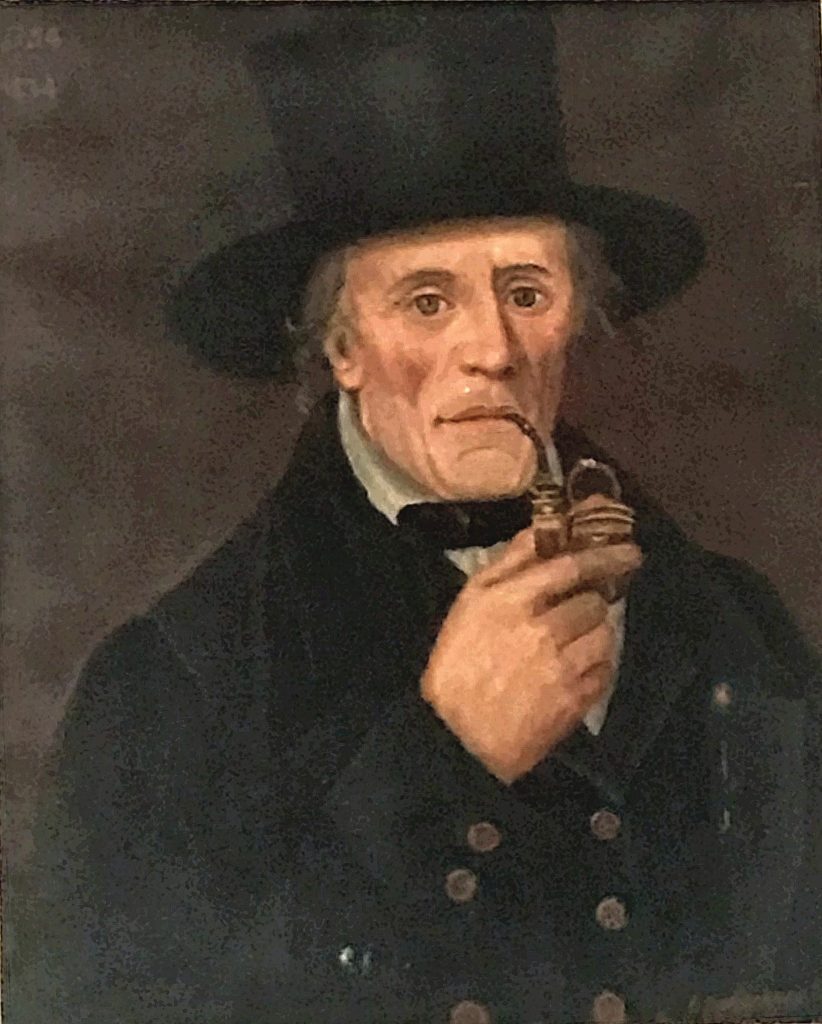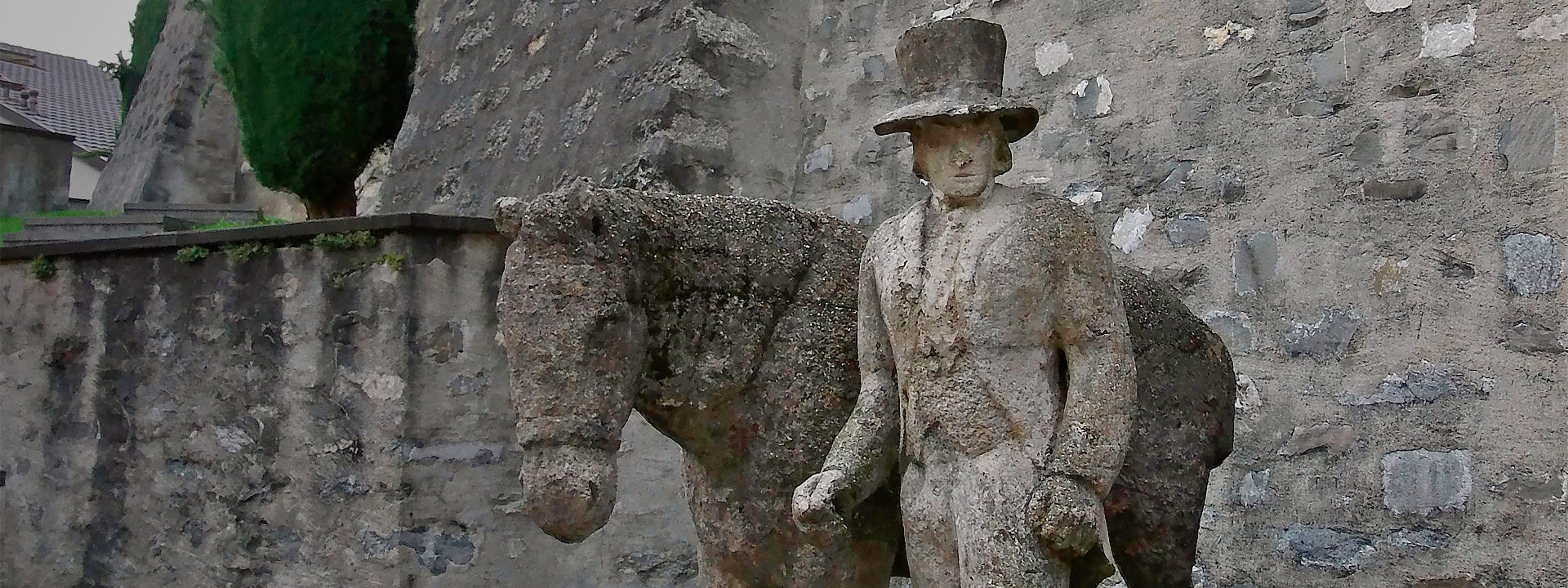Pierre-Maurice Rey-Bellet, famously dubbed ‘Le Gros-Bellet’ for his towering (for the time) presence at 5 feet 10 inches (1.90 m), played a pivotal role in the tumultuous events of 1790 which paved the path to independence for the Lower Valais.
Since 1536, the Lower Valais region had been ruled under the iron hand of governors from the Valais des Sept-Dizains (5 communes from the German-speaking Upper Valais, along with Sierre, and Sion). These governors were understandably despised by the local population, and it’s no wonder—appointed for 2 years, the corrupt governors could keep two-thirds of any fines they administered for themselves! But among these furiously unpopular rulers, it was the governor residing at Monthey Castle in 1790, Hildebrand Arnold Schiner, who ignited the catalyst of outrage and outright rebellion.

Our story begins on an ordinary Wednesday in March. Pierre-Maurice Rey-Bellet was on his way home to Val-d’Illiez after a morning at the market in Monthey. At the Vers Ensier fountain, twenty minutes from the castle, he saw two men on horseback arguing violently: Jean-Joseph Rey-Borratzon from Val-d’Illiez, and Jean-Joseph Donnet from Cheseaux sur Troistorrents. Rey-Bellet intervened, perhaps somewhat too roughly—in the prime of his life, at age 36, his contemporaries said he was ‘built like Hercules’. Sandwiching himself in the middle of the rapidly escalating dispute, Rey-Bellet made the men dismount, and wrangled them apart.
Blood streaming from his nose, Jean-Joseph Donnet angrily turned back and went to complain to the governor. Shortly thereafter, the governor summoned Rey-Bellet to a hearing at the castle. Rey-Bellet argued that he didn’t deserve punishment, having done a praiseworthy deed by separating the two fighting men. Nevertheless, he was fined 1 louis. Driven by a keen sense of justice, Rey-Bellet refused to pay his fine and was consequently summoned a second time. This battle of wills went on for some time, during which the original fine was doubled, then tripled! Rey-Bellet even appealed to the Diète de Mai (the seat of power for the Sept-Dizains), to no avail.
On September 8, 1790, another market day in Monthey, an informal group of disgruntled inhabitants from Val-d’Illiez were gathered in an inn near the castle. They made such a racket that the governor’s clerk, a man called Meillat, burst onto the premises and threatened more fines. Besieged and manhandled by the crowd, the clerk managed to escape, just missing the arrival of Rey-Bellet, who was as fired up as his compatriots. He had come directly from the castle, where he had smashed his fist on the very table where Schiner was eating. He had stormed into the castle to demanding the return of his mare, who had been seized at the market that morning as collateral for his fine, now an exorbitant 9 louis!
While Rey-Bellet was recounting this tale to the already-angry crowd, the beleaguered clerk Meillat returned to the castle. And when Governor Schiner discovered the state of his clerk, he stormed out of the castle in a rage, intending to punish whoever was responsible. Upon seeing Rey-Bellet at the inn window, he immediately threatened his nemesis with prison. Rey-Bellet took to the street, followed by over 60 of his neighbours from Val-d’Illiez, furiously demanding that the governor show him the law condemning him. Sensing the imminent danger, Schiner hurriedly turned back and fled to the safety of the castle, with the seething crowd, led by Rey-Bellet and Rey-Borratzon, hot on his heels.
Enraged, and somehow, by now, bare-chested, Rey-Bellet lunged at the governor, grabbed him, and held him over the castle wall in view of the crowd. The governor managed to escape Rey-Bellet’s powerful grip and fled down the service stairs, catching a few blows from Rey-Borratzon and a kick from Pierre Rey that knocked off his wig on the way. The disgraced governor fled to St-Maurice, leaving the country in utter turmoil. In the following years, troops were raised in Upper Valais, the Diète obstinately continued to send in new governors, and conspiracies like that of ‘The Crochets’—rather less lawful than Rey-Bellet, were condemned. But finally, on January 28th, 1798, the Tree of Liberty was planted in front of the town hall in St-Maurice. The Lower Valais proclaimed its independence once and for all on February 4th. And over time, our protagonist, Pierre-Maurice Rey-Bellet, went down in history as the heroic ‘Gros-Bellet’ who instigated the union of Upper and Lower Valais, and helped create the Canton of Valais as we know it now, ‘from the source of the Rhône to Lake Geneva.’
Sources : Summary according to official records (based on Pierre Devanthey, 1972)
